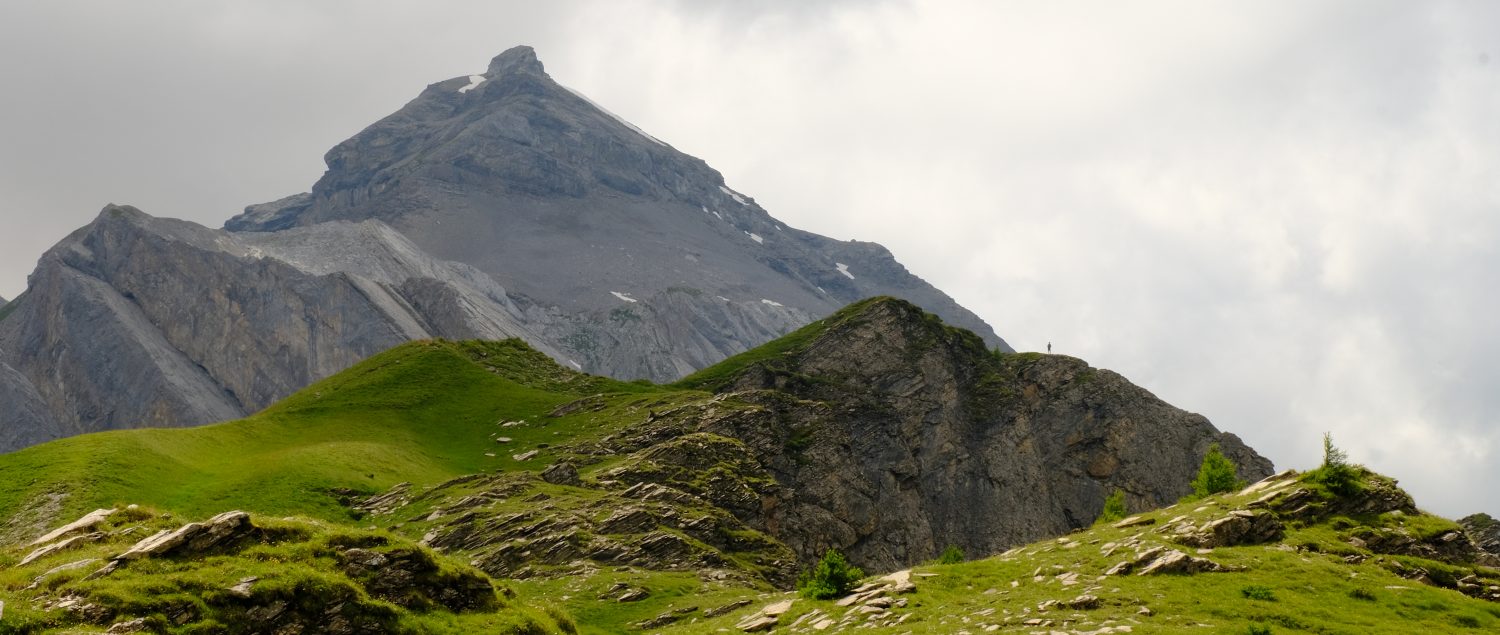An undulating stroll alongside alpine meadows and a pinewood fringed lakeshore leads to a glorious flower-strewn slope and a mountain café.
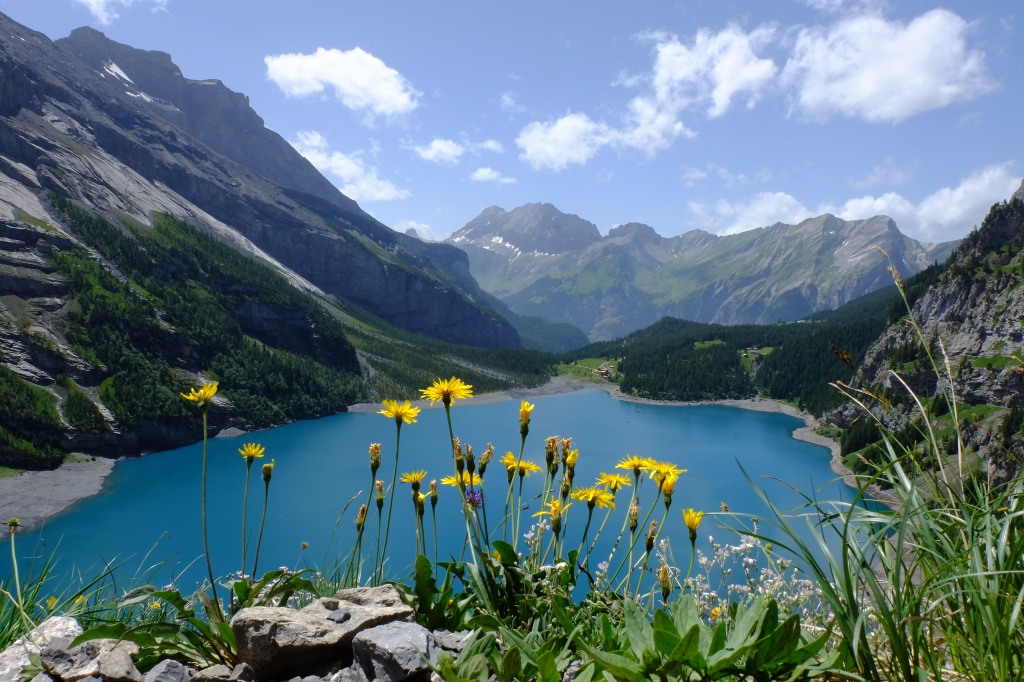
Photo Credit: Nick Haine
The startlingly turquoise Lake Oeschinen rests high above the Kander Valley at 1580m. Since 2007 it has been part of the Jungfrau – Aletsch – Bietschhorn Unesco World Heritage Site. The water originates from one of the most glaciated parts of the European Alps and clear evidence of the geological processes that formed the Alps surround it.
Recent research suggests that it was only 2,300 years ago that a huge landslide, possible triggered by an earthquake, cascaded down the adjacent Doldenhorn mountain. This side valley was blocked and glacier-fed streams formed Lake Oeschinen behind the rubble. There is no outlet stream from the lake, water eventually emerges in springs lower down the hillside. Instabilities still exist, currently (2022) the path on the southwestern side of the lake is closed due to risk of rockfall.
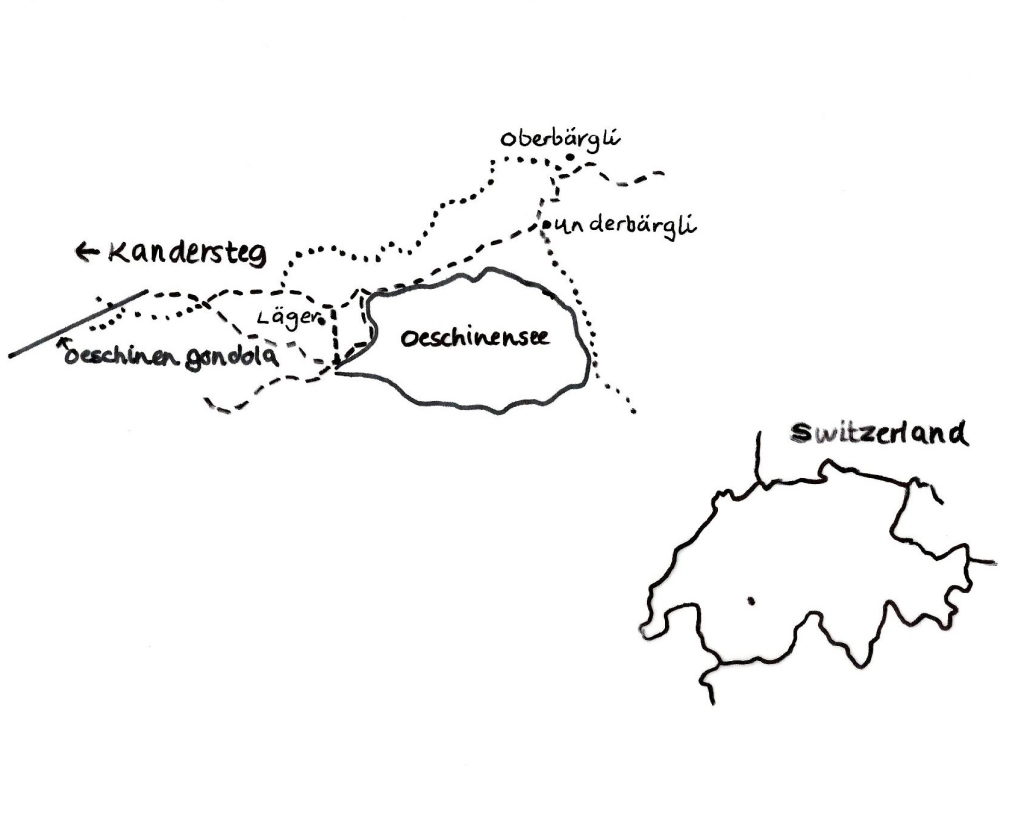
Walk Directions: Take the Oeschinen gondola up from the eastern side of Kandersteg. From the top gondola station head eastwards on the wide track (route 5). Keep left on route 5 and ignore the large track that quickly heads right, directly to the lake (route 4). Continue on route 5 ignoring the small path that goes left to Oberbärgli / Hohtürli / Blüemisalphütte (routes 7 & 8). On reaching the café at Läger keep left on a small woodland path that leads down to the lakeshore. On reaching the lake turn left and follow the good path as it climbs, sometimes under overhanging cliffs, to the farm / mountain café at Underbärgli at 1824m. Just in front of the café a small path leads off right, follow this for a short distance to see the flowers. THIS NARROW PATH IS AN ALPINE TRAIL, ONLY SUITABLE FOR EXPERIENCED HIKERS / MOUNTAINEERS, IT VERY QUICKLY STARTS TO TRAVERSE STEEP SLOPES WITH SHEER CLIFFS BELOW. BE AWARE THAT A SLIP COULD PROVE FATAL. Walk back the way you came to return to the gondola.
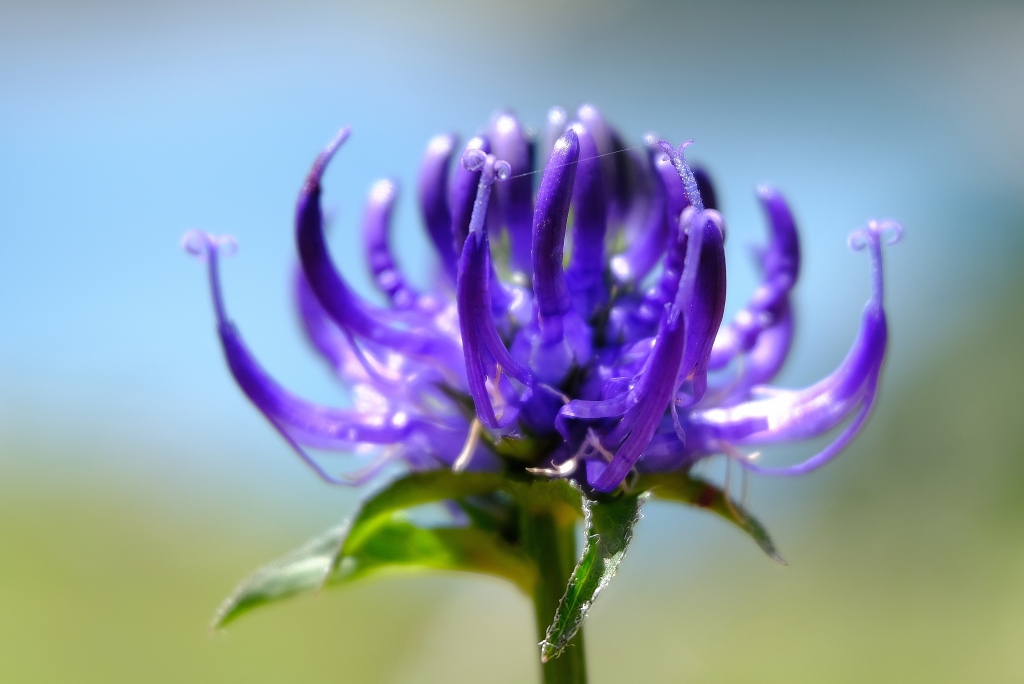
Photo Credit: Sally Woodbridge
Round-Headed Rampions flourish in the meadows on the way to the café at Läger. These meadows are below the natural treeline. In many places on mountainsides in the alps the trees have been cleared, sometimes hundreds of years ago, to provide summer grazing and hay production.
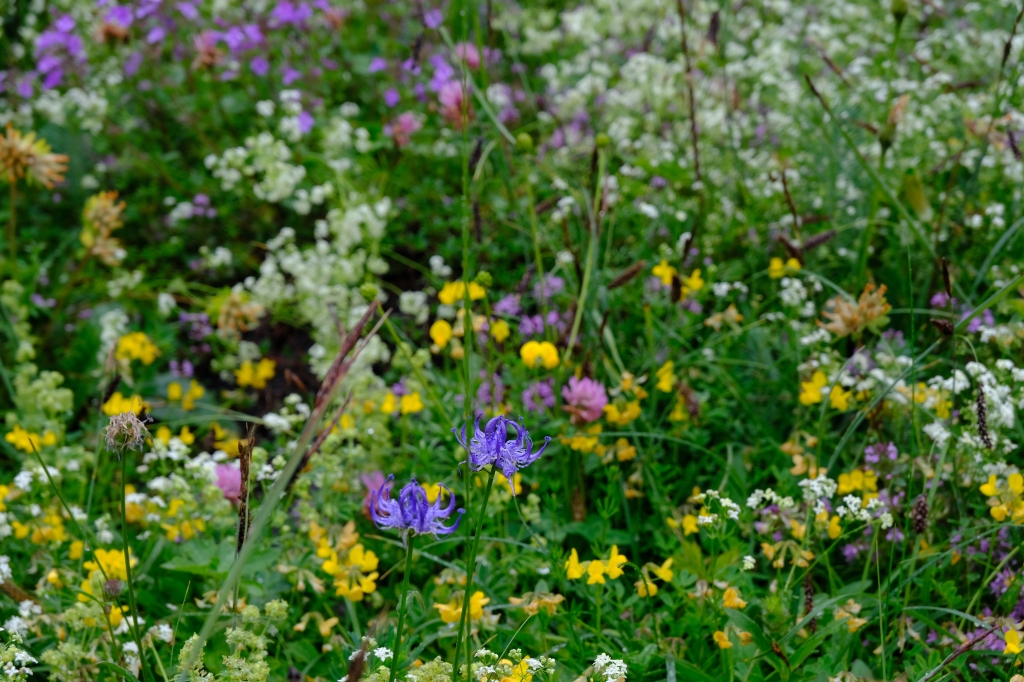
Photo Credit: Sally Woodbridge
Traditional organic farming methods have resulted, over time, in an incredible diversity of flora and insects in these habitats, as shown above.
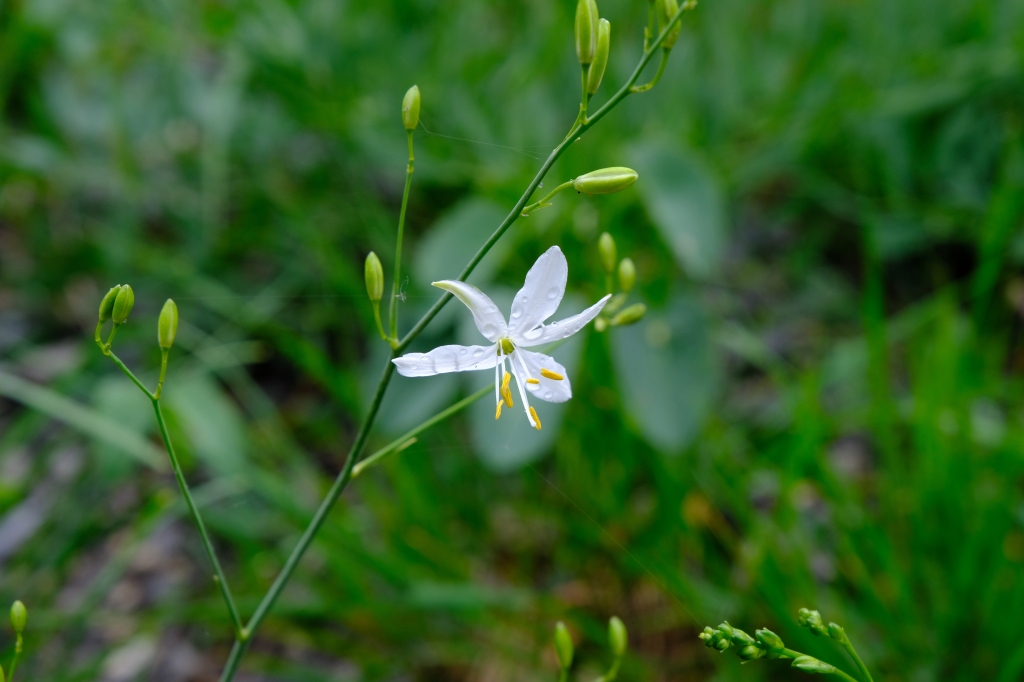
Photo Credit: Sally Woodbridge
Beside the path that follows the curve of the lakeshore there are open breaks in the pine woodland. Some tall beautiful flowers flourish in this damper, more shaded, rocky terrain, such as this raindrop glistened St Bernard’s Lily.
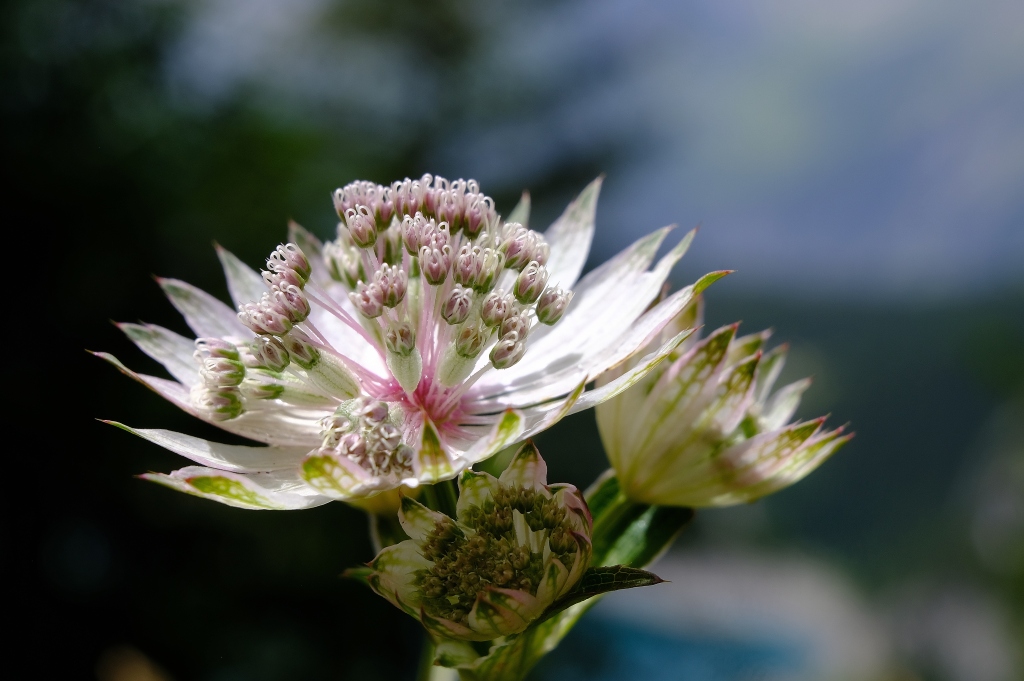
Photo credit: Sally Woodbridge
This showy Great Masterwort was almost one metre tall. These plant heights are in stark contrast to species growing in the higher alpine zones, above the treeline. There growing low allows the plant to absorb more heat from the ground, avoid drying winds and take advantage of the insulating effect of snow cover.
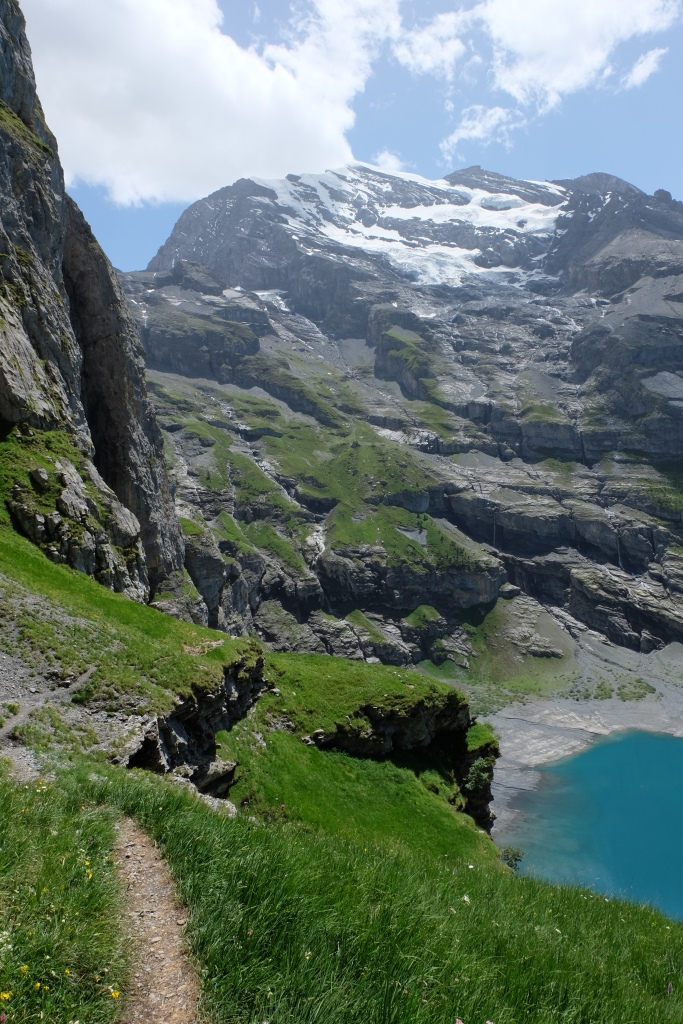
Photo credit: Nick Haine
Underbärgli at 1824m is surrounded by meadows. This again may be due to clearance for grazing land. South facing slopes at the warmer alpine latitudes sometimes support trees up to 2500m. Latitude and slope aspect are more influential on the treeline than the actual height of the land.
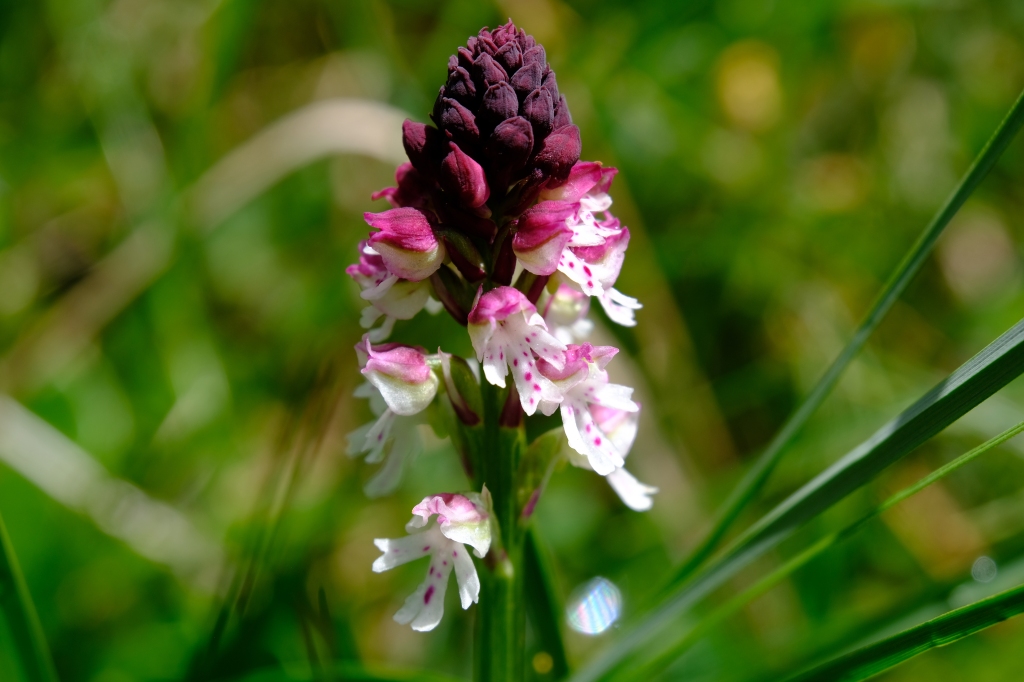
Photo Credit: Sally Woodbridge
Orchids are perennials, meaning they live for over two years. In the alpine environment perennials, not annuals, are the most numerous. Extreme temperatures, lasting snow cover and big fluctuations in rainfall make it a challenging habitat for plants to grow and reproduce in. Perennials have an advantage in that they don’t need to germinate and produce seeds in a single year. Orchids have tuberous roots where energy can be stored from one year to the next.
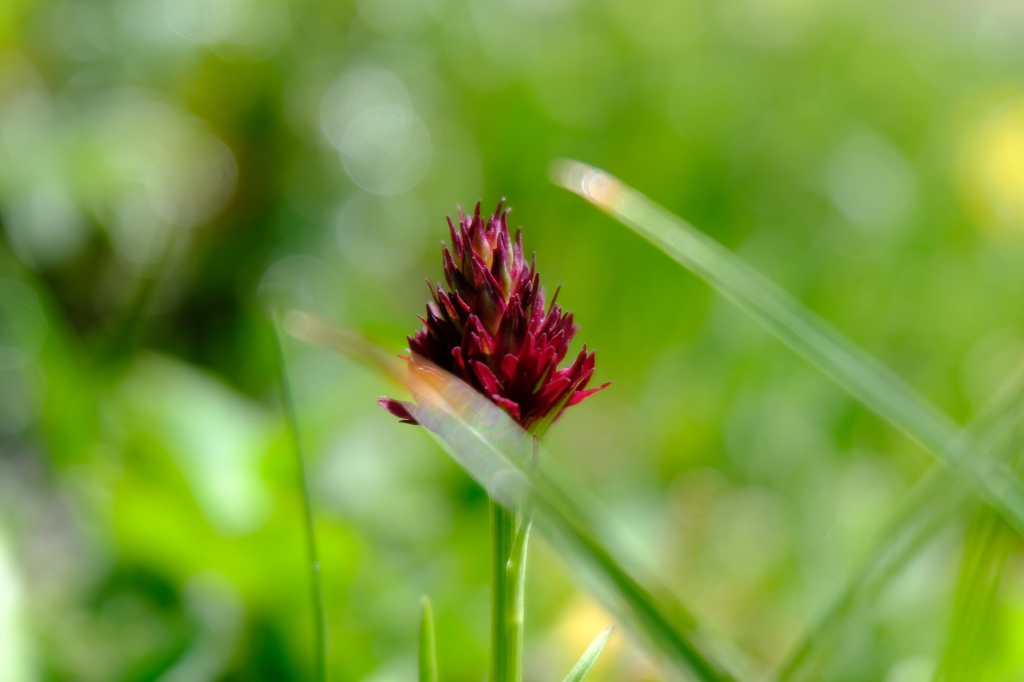
Photo Credit: Sally Woodbridge
Black Vanilla Orchids, as their name suggests, smell strongly of vanilla. This family of flowering plants, Orchidaceae, is one of the two most widespread plant families on earth, and includes the tropical / subtropical orchid from which we harvest vanilla pods.
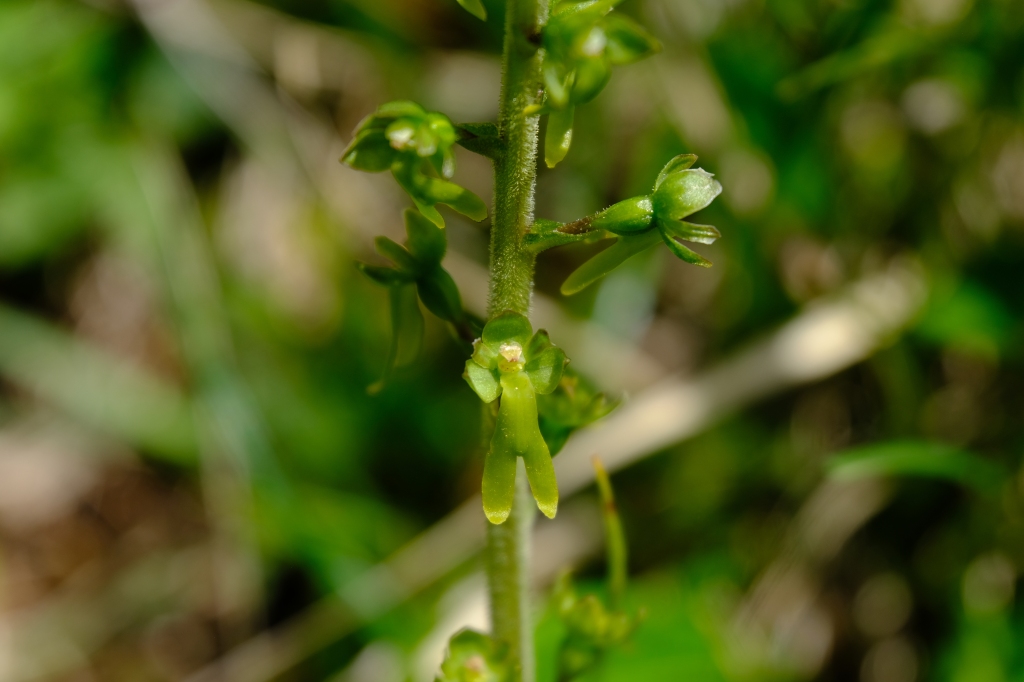
Photo Credit: Sally Woodbridge
The Common Twayblade is also an orchid. It’s name derives from the two (tway) rounded leaves (blades) at the base of it’s stem. It can be hard to spot because the green flowers blend into the grasses.
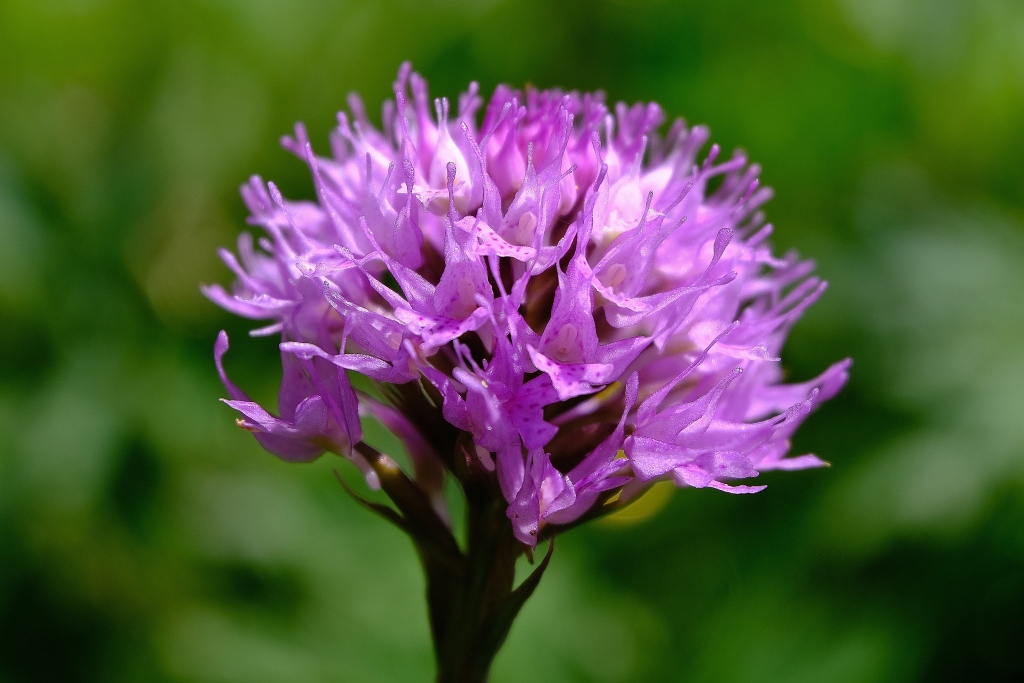
Photo Credit: Sally Woodbridge
At first sight this orchid looks like a chive. Look more closely though and you can see the typical zygomorphic orchid flower shapes with their bilateral symmetry. These flowers can only be divided into two equal halves along one vertical line. In contrast radial symmetry allows you to divide objects into identical halves by any line passing through the centre.
- Reynolds, Kev (2018 (2015 Edition reprinted with updates)) Walking in the Bernese Oberland, Cicerone Press.
- Grey-Wilson, Christopher and Blamey, Marjorie (1995, second edition) Collins Pocket Guide: Alpine Flowers of Britain and Europe, HarperCollins.
- Langley, Jim and Gannon, Paul (2019), The Alps: A natural companion, Oxford Alpine Club.
- Plantlife.org.uk
Please remember that outdoor activities like walking come with inherent risks. The author has endeavoured to make the information as accurate as possible at the time of writing but the decision to undertake the walk is entirely at your own risk. No responsibility can be accepted for any kind of physical injury, loss or damage to you or your property.
If you enjoyed this please enter your email address below to follow this blog and receive notifications of new posts by email.

